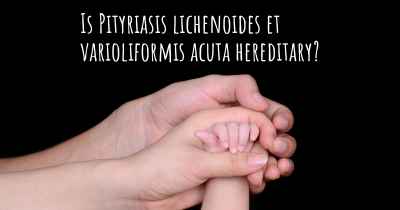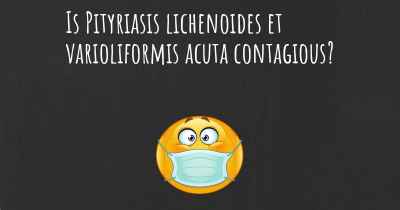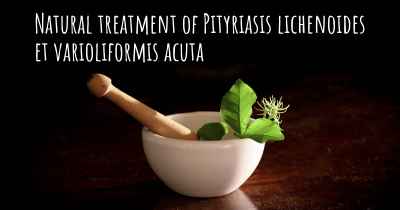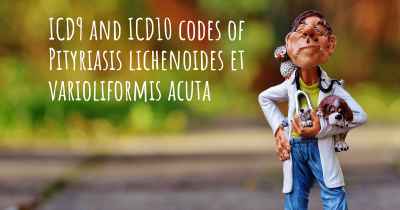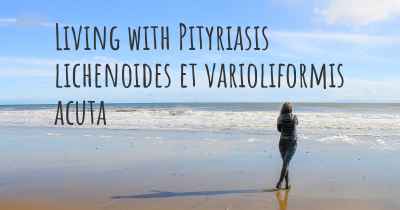Which are the symptoms of Pityriasis lichenoides et varioliformis acuta?
See the worst symptoms of affected by Pityriasis lichenoides et varioliformis acuta here
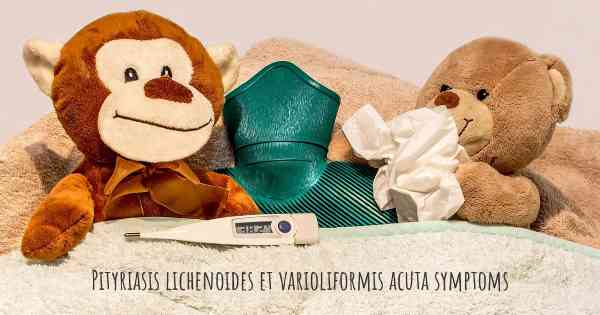
Pityriasis lichenoides et varioliformis acuta (PLEVA) is a rare skin condition characterized by the development of small, red, scaly papules or vesicles on the skin. The exact cause of PLEVA is unknown, but it is believed to be an abnormal immune response to certain infections or medications.
Symptoms:
The symptoms of PLEVA can vary from person to person, but typically include:
- Papules: The primary symptom of PLEVA is the appearance of small, red, raised bumps on the skin. These papules can range in size from a few millimeters to a centimeter in diameter. They may be flat or slightly raised and often have a scaly or crusted surface.
- Vesicles: In some cases, the papules may develop into fluid-filled vesicles. These vesicles can be itchy and may rupture, leading to the formation of crusts or ulcers.
- Lesions: Over time, the papules and vesicles may evolve into larger, more inflamed lesions. These lesions can be red, purple, or brown in color and may be surrounded by a pale halo.
- Itching: Many individuals with PLEVA experience itching, which can range from mild to severe. Scratching the affected areas can worsen the symptoms and may lead to secondary infections.
- Flu-like symptoms: In some cases, individuals with PLEVA may experience flu-like symptoms such as fever, fatigue, and malaise. These symptoms are more common in severe or prolonged cases of the condition.
- Recurrent episodes: PLEVA often presents as recurrent episodes, with new papules and lesions appearing periodically. The duration and frequency of these episodes can vary, with some individuals experiencing only a few episodes while others have a chronic, relapsing course.
Diagnosis and Treatment:
Diagnosing PLEVA can be challenging, as the symptoms can resemble other skin conditions. A dermatologist will typically perform a physical examination and may order additional tests, such as a skin biopsy, to confirm the diagnosis.
Treatment for PLEVA aims to alleviate symptoms, reduce inflammation, and prevent complications. The specific treatment approach may vary depending on the severity of the condition, but commonly includes:
- Topical corticosteroids: Mild cases of PLEVA may be treated with topical corticosteroid creams or ointments to reduce inflammation and itching.
- Phototherapy: In more severe or persistent cases, phototherapy using ultraviolet (UV) light may be recommended. This treatment can help suppress the immune response and improve the skin lesions.
- Systemic medications: Oral antibiotics, oral corticosteroids, or other immunosuppressive medications may be prescribed for severe or refractory cases of PLEVA. These medications work to modulate the immune system and reduce inflammation.
- Symptom management: Over-the-counter antihistamines or topical anti-itch creams may be used to alleviate itching and discomfort associated with PLEVA.
Prognosis:
The prognosis for PLEVA varies among individuals. In some cases, the condition may resolve spontaneously within a few months to a year. However, PLEVA can also have a chronic and relapsing course, with periods of remission and flare-ups. It is important for individuals with PLEVA to work closely with a dermatologist to manage their symptoms and prevent complications.


